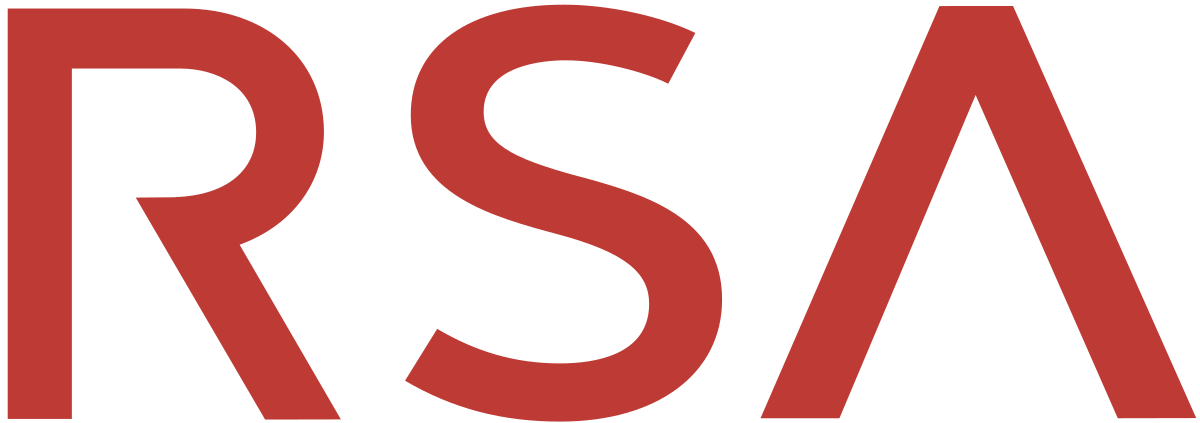Complexity, risks and compliance pressures
Imagine an organization with thousands of employees, each with access to dozens of applications and data. Who has what rights? Are former employees really closed? Can you demonstrate that you comply with strict rules such as NIS2 or DORA?
In 2025, such questions are more urgent than ever due to the European NIS2 directive and DORA regulations. Failure to comply with these rules can lead to fines of up to 10 million euros or 2— 5% of turnover. Ironically, trusts 96% of the organizations still largely on manual processes for their identity & access management (cerby.com). This is a recipe for errors, data breaches, and audit stress. And the numbers don't lie: according to research, 52% of the large organizations have experienced a security incident that can be traced back to manual identity workflows. At even 58% former employees still had access to critical systems after departure (cerby.com).
What exactly is Identity Governance & Administration (IGA)?
Identity Governance & Administration (IGA) is part of Identity & Access Management (IAM) that focuses on policy, supervision and compliance as well as administration, or the life cycle management of digital identities within an organization.
Simply put, IGA ensures that user accounts and roles can be managed across multiple platforms in a secure and controlled manner. In addition, it offers insight and control over who has access to which resources, even when functions or roles within the organization change.
An IGA solution includes managing the entire identity lifecycle and regulating access across the breadth of business systems. Both on-premises and cloud environments. IGA tools collect and correlate all identity and access data distributed across the organization, and provide central control over user accounts and their rights. This means, for example, that an IGA system can automatically grant new employees appropriate access upon employment, changes in the event of job changes, for example, and can withdraw accounts immediately when someone leaves employment.
Where general IAM focuses on authentication and authorization (logging in and providing access), IGA goes one step further by ensuring that the correct people the correct have access, with full visibility and compliance. Identity Governance provides policies, roles, and controls (e.g. separation of powers), while Identity Administration focuses on implementing them (e.g. provisioning/deprovisioning, requesting self-service access). IGA is therefore also called identity security mentioned.
Specifically, IGA solutions offer features such as:
- Automatic provisioning & deprovisioning: creating and withdrawing new accounts upon departure is automated based on HR events or workflows. This prevents forgotten “orphaned accounts” from remaining with potentially unauthorized access.
- Access Reviews and Certification: periodically, managers must confirm the access rights of their team members. IGA simplifies this by automatically rolling out review campaigns and highlighting anomalies.
- Role-based & attribute-based access control (RBAC/ABAC): IGA uses role models (RBAC) and contextual attributes (ABAC) to standardize accesses. Rights are granted based on function, department, or other attributes, making “least privilege” enforcement easier. IGA also monitors the separation of duties. Preventing one person from having two conflicting rights (to prevent fraud).
- Self-service and workflow: users can request access to additional systems themselves via a portal; those requests go through defined approvers and are documented. This streamlines the process and reduces the need for IT to intervene manually.
- Auditing & compliance reporting: every change in access rights, every approval, and every login attempt is logged. IGA generates audit-ready reports that demonstrate whomsoever when has received or lost access, and whether all procedures have been followed. Necessary for a compliance audit, for example.
- Security ecosystem integrations: Modern IGA platforms connect with directories (such as Active Directory/Azure AD), HR systems, cloud applications (via API/SCIM), IT Service Management tools (e.g. ServiceNow or AutoTask), and even SIEM systems. This makes IGA part of your entire security architecture.
In short, IGA is the central hub for identity management: it is a policy-driven “single source of truth” for all accounts and rights in the organization.
Why is IGA crucial for large organizations?
For organizations with thousands of identities (employees, external partners, machine accounts), managing access is a huge challenge. Without a central governance system, there is a proliferation of rights and accounts that is difficult to oversee, with all the associated risks. IGA is not a nice-to-have, but a must-have:
1. Regulatory Compliance (GDPR, NIS2, DORA)
Regulators' pressure is increasing in the area of identity & access management. For example, the GDPR (AVG) requires that access to personal data is limited to what is necessary (“need-to-know/least privilege”), and that any access to sensitive data can be demonstrably justified. Newer laws go even further: the EU NIS2 directive will apply from October 2024 to essential and important organizations in a wide range of sectors, with the requirement that “appropriate security measures” be taken and top management be liable in case of negligence. Although NIS2 does not prescribe every detail, the focus is on issues such as access control, incident reporting and continuity. Exactly the areas where IGA plays a role.
For the financial sector, the Digital Operational Resilience Act (DORA) came into force as of January 2025. DORA explicitly requires institutions to implement strict identity & access management. So demands Article 28 that one at any time real-time insight has all user rights and that regular access reviews are executed to prevent privilege creep (rsa.com). In other words, you must be able to continuously demonstrate who has access to critical systems and whether that access is still appropriate. Strong authentication (MFA) must also be used and identity services continue to work under all circumstances (rsa.com). Organizations that do not comply risk heavy fines — DORA assumes enforcement with fines of up to 2% of global annual turnover, plus possibly daily penalty payments until compliance is achieved.
An IGA system is virtually indispensable for meeting these compliance requirements. This is because it automates the controls and administration that supervisors require. With IGA, you can full traceability demonstrate: who has what access rights, who approved them, and when those rights were last revised.
2. Managing identity risks & preventing data breaches
Apart from compliance, poor identity governance is a direct security risk. Cyber attacks are increasingly targeting vulnerabilities in identities: such as stolen passwords, phishing into admin accounts, or a former employee whose account has never been deactivated. Out of the Verizon Data Breach Investigations Report It appears that stolen credentials play a role in 31% of data breaches. With IGA, you significantly reduce this chance, by least privilege to enforce and quickly recognize suspicious access activities.
Without IGA, there are countless scenarios that go wrong: employees who have accumulated too many rights over time (privilege creep), “ghost accounts” or “orphaned accounts” of long-gone users, or sensitive systems where no one knows exactly who can access. These are exactly the holes that attackers slip through.
An effective IGA program addresses these risks through central visibility, automatic detection of policy violations, adequate revocation of rights and a reduction in human error.
3. Efficiency and cost savings
Although security and compliance are the main drivers, the efficiency aspect should not be underestimated — especially in large companies. This is because manually managing user rights is quite labour-intensive. Think of IT service desks that reset passwords every day, HR that has to send out tickets to different application managers every time they hire, and managers who have to check lists in Excel every quarter for an access review. The costs of this are enormous.
Identity Governance & Administration automates repetitive tasks and streamlines processes. This provides immediate cost savings. Routine jobs such as creating accounts, granting default rights, resetting passwords and performing access reviews can be up to 70% faster or cheaper. In addition, end users can use self-service portals to perform small tasks themselves (e.g. request access or recover a forgotten password), reducing the pressure on help desks.
In addition, IGA tools provide insight via dashboards and reports that allow you to make more informed decisions. Efficient identity management is therefore not only an IT issue, but directly provides organization-wide value. New employees are productive faster, employees have less access when changing jobs, and audits require fewer man-hours. In other words, IGA is a crucial investment that not only helps with security and compliance, but also provides significant operational efficiency improvements and cost savings by automating manual and repetitive user management tasks.
4. Integration into a Zero Trust Strategy
More and more organizations are embracing Zero Trust as a security model, where no access is trusted by default — whether it comes from inside or outside the network. Identity is at the heart of Zero Trust (“never trust, always verify”), which means you need to be able to verify at any time whomsoever someone is and whether that person who can have specific access. IGA forms the basis for achieving this (aumatics.nl).
In a world of hybrid working, multi-cloud environments and more and more SaaS applications, the traditional network boundary has disappeared. Identities are the new perimeter. IGA is responding to this by consistent policy and insight for all identities to offer regardless of where the application is running (on-prem, cloud or hybrid). It ensures that Zero Trust principles such as least privilege and continuous verification become feasible in practice. For example, IGA can integrate with conditional access policies — if a device is not compliant or is logged in from a foreign country, IGA can temporarily revoke access to sensitive applications or require additional verification in cooperation with IAM. IGA also feeds your Security Operations Center with real-time identity data via SIEM integration, so that anomalous behavior is immediately noticeable.
Conclusion
In today's digital reality, where users work from everywhere and data is scattered across cloud and on-prem systems, Identity Governance & Administration is the spider in the web of security and compliance. Are you curious about what IGA looks like for your organization or do you want to discuss identity & access management in general? Then schedule an informal orientation meeting with an Aumatics IGA expert. As an independent security partner, we honestly advise on the most appropriate approach and tooling for your situation. This is how you lay a future-proof basis for identity management, not only staying one step ahead of attackers, but also dealing with auditors with peace of mind.



